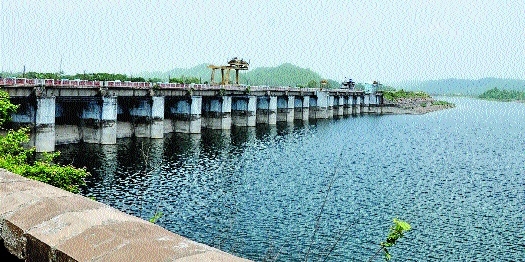Total live water stock of Nagpur distt stands at 69.98 per cent
| Date :06-May-2020 |

Navegaon Khairy Dam. (Pic By Anil Futane)
Staff Reporter :
It is the first week of May and the Totladoh dam, the biggest in Nagpur district that caters the water demand of the whole district, has a live water stock of 89.59 per cent. Exactly a year ago, in April 30, its live water storage stood at 1.7 per cent. After many years, Nagpur district seems to be set for a summer with little or no water woes bringing much relief to farmers in Nagpur district and Vidarbha, especially at a time when the entire state is fighting the coronavirus pandemic.
The five major dams of Nagpur district have a total live water stock of 69.98 per cent till date. The monsoon last year brought good amount of rains in Madhya Pradesh and Vidarbha. It helped to restore all major dams in Nagpur district after a long time. The post-monsoon rains also increased the level which is now become a boon for the district.
Totladoh dam has 89.59 Mcum live water stock. In Wadgaon dam water storage stands at 60.57 per cent, and last year it was just 20.06 per cent. Kamptee Khairy Dam, which had 26.96 per cent water stock in April last year, now is 57.80 per cent water stock. Similarly, Khindsi dam which cater the water needs of Ramtek region had just 9.39 per cent of water storage last year and now it is also in better position with 15.16 per cent. The 384 dams across the Nagpur division that have a capacity to hold 4,607.01 million cubic metres of water, have an average live water stock of 2,260.81 mcum or 49.07 per cent, which is almost five times from the previous year’s 10.48 per cent.
Vidarbha region in last three years have experienced severe water crisis due to below normal monsoon. However, agriculture department officials believe the unseasonable rains, coupled with a longer winter, helped to retain higher water level in dams. In addition, water conservation work under Jalyukta Shivar in last five years have helped to tackle drought. In dams, where water level had touched zero in April last year, have witnessed a spike in water level the same month this year — in Gosikhurd dam, water level rose from 0% to 20.38% and Lower Wardha saw a rise from 6.53% to 60.13%. Indian Meteorological Department (IMD) have predicted normal monsoon this year but some weather experts are expecting below normal rains due to El Nino effect. However, the satisfactory water level in all dams will not allow to face any kind of water shortage even after less monsoon in the region.